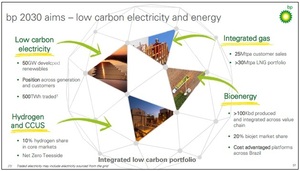Closing Out the Year with Optimism
Energy Disrupter
ADVERTISEMENT
It’s what I like to call Windtober in Minnesota, that few-week period where the fall chill and lingering warm seem to battle each other, and much of what’s in your yard—for me, my Styrofoam Halloween cemetery—blows away during those gusty days. The pretty colors fade to brown and the trees are stripped of their leaves seemingly overnight—winter is around the corner.
We’re all grateful to be able to warm our homes or businesses at the push of a button. For some, that might involve tapping into a stockpile of wood pellets. Manufacturers have been readying for the season for many months, and despite the uncertainty the year has brought, things are looking good. As industry stakeholders often articulate, there are always unknowns, including heating degree days, market demand and other heating fuel prices. But this year has added another, and that’s the downstream effects of fiber constraints caused by sawmills throttling down production during a pandemic that has no end in sight. Some have already felt the pinch, but for now, the data shows very modest implications. During times like these, finding ways to pinch pennies and save money is more important than ever. This is the theme of freelance writer Keith Loria’s feature, “Reducing Front-End Expenses,” on page 10. Although this story focuses more on equipment and technology investments—mostly big picture strategies more so than short-term—there is some great advice in there from industry experts when it comes to fiber processing and handling logistics. During his discussion with Loria, Ken Upchurch, vice president of sales at marketing at Bruks Siwertell, touched on the difference choosing an automated versus manual woodyard can make on an operation’s bottom line, which is applicable not just to wood pellet plants, but biomass power and thermal plants as well. “Reducing the manpower and equipment used in a 500,000-ton-per-year plant can be significant,” he says. “Through automation, staffing can be reduced significantly. In addition, high-energy consumers such as dozers can be eliminated. The cost savings on an annual basis can easily exceed the $1 million threshold.”
Related to this topic, you’ll find a profile on KEITH Manufacturing’s moving floor technologies, ideal for transporting anything from wood waste to municipal solid waste, and an excerpt from an interesting case study on the potential of straw-to-energy in a county in New York.
The last story I’ll mention is “RNG Revolution” on page 16, in which I provided a snapshot of the North American RNG industry. In it, I speak with the RNG Coalition’s Johannes Escudero on growth and drivers, challenges and more, and detail several examples of the versatile types of RNG-based projects recently built or under construction in the U.S. With landfill gas, wastewater treatment plants, animal manure, ag and food waste all being potential sources of RNG generation, it seems the potential is nearly endless. What will grease the industry tracks even more is continued and enhanced policy support.
This is final issue of Biomass Magazine in 2020, so I want to take the opportunity to thank you all for your continued readership and support. We’re rooting for an “unprecedented” 2021, meaning the best year our respective industry sectors have had yet.
Author: Anna Simet
Editor
asimet@bbiinternational.com
















